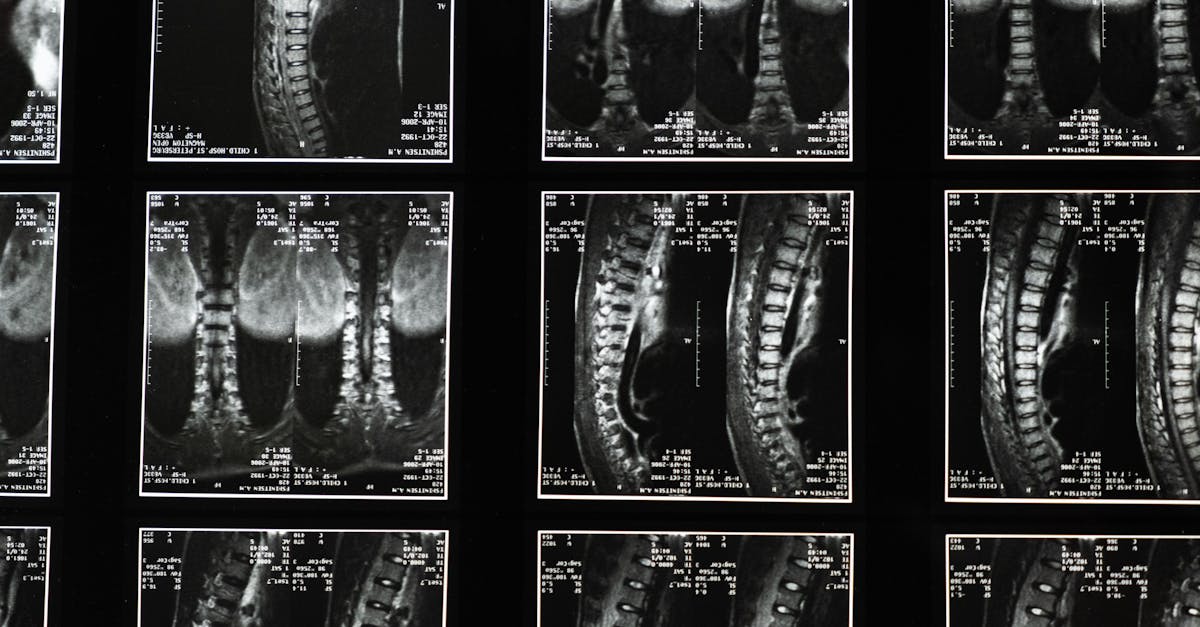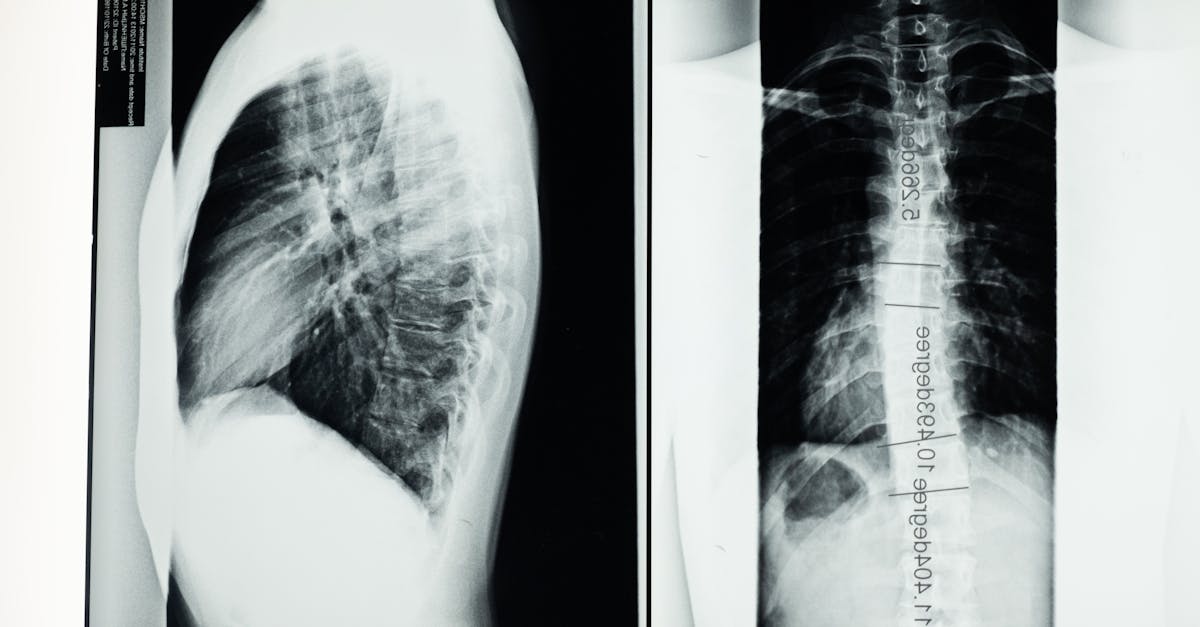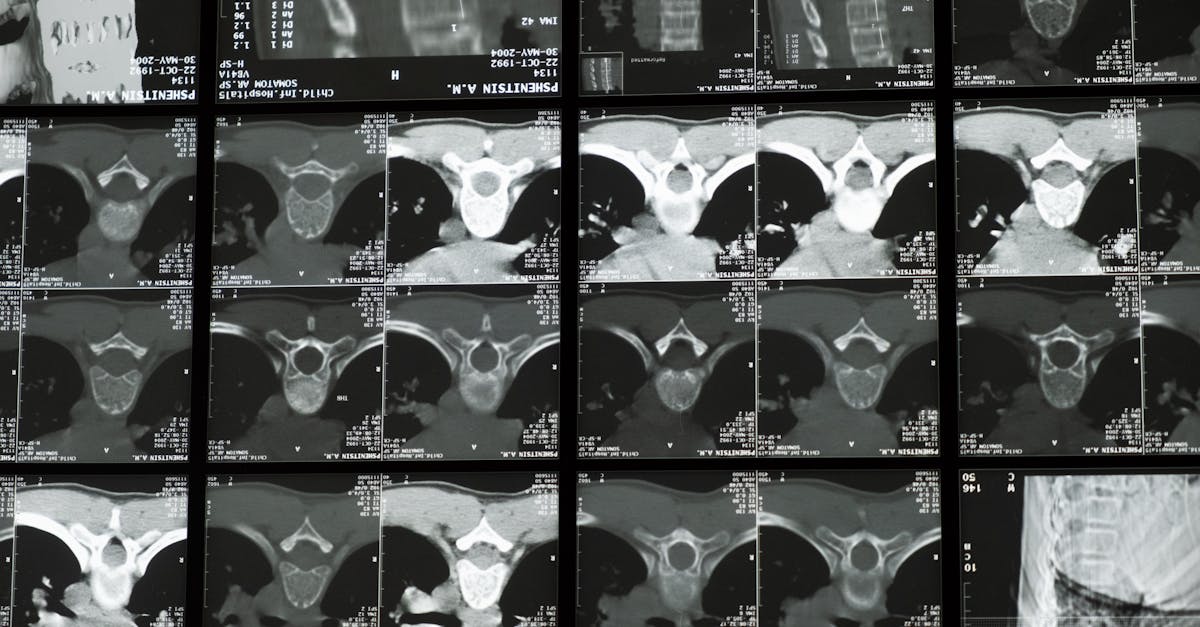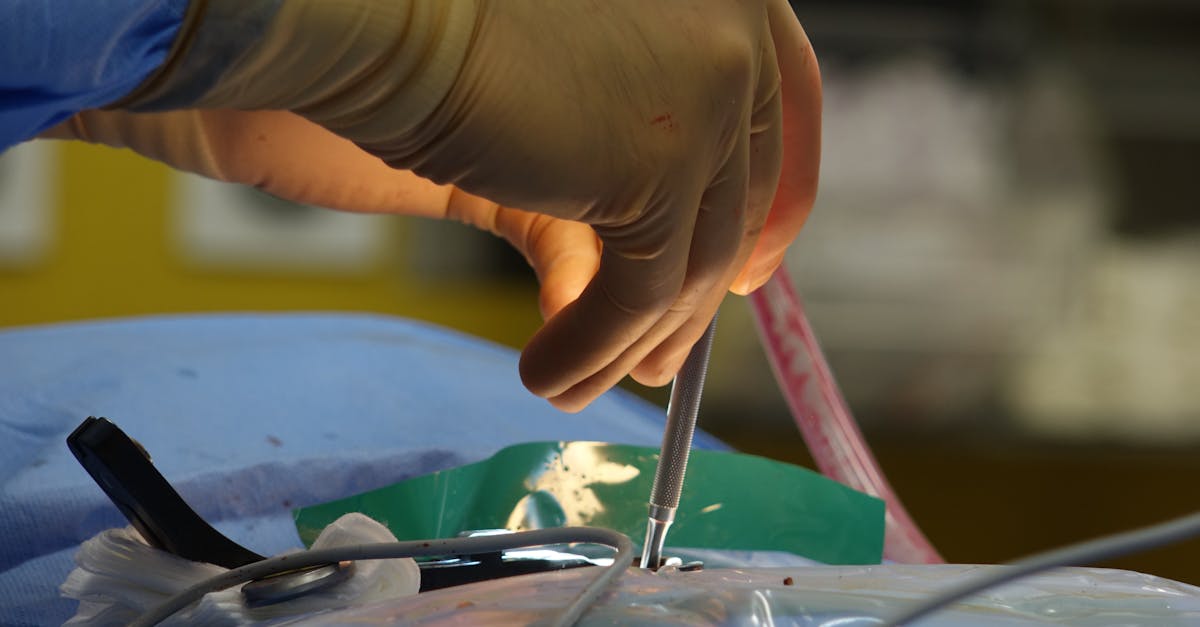|
In Short, non-invasive approaches to scoliosis prevention encompass a range of strategies designed to halt the progression of spinal curvature. These methods, such as physical therapy, bracing, and the Schroth Method, provide significant benefits including improved posture, enhanced muscle strength, and reduced discomfort. By focusing on holistic health and fostering better body alignment, these interventions allow individuals both children and adults, to manage scoliosis effectively without the need for surgical procedures. Such proactive techniques promote a healthier lifestyle and are made accessible through facilities like Pulse Align Clinics. |
Non-Invasive Approaches to Scoliosis Prevention focus on a range of strategies that aim to halt the progression of spinal curvature without surgical intervention. Key methods include physical therapy to enhance muscle strength and improve posture, along with bracing, which is particularly effective for children during growth spurts. Innovative techniques such as the Schroth Method provide personalized exercise regimens tailored to individual spinal conditions. Additionally, lifestyle practices like nutrition and regular check-ups play crucial roles in maintaining spinal health and preventing scoliosis from worsening.

Welcome to Pulse Align, where our non-invasive approach promotes overall well-being through gentle, imperceptible pulses that help your body naturally restore its balance and optimal posture. This innovative method supports *muscle tone symmetry* and encourages a healthier alignment, allowing individuals to experience enhanced comfort and reduced tension.
Embracing Natural Recalibration
At Pulse Align, we understand that the journey to well-being is unique for everyone. Rather than focusing on specific discomforts, our gentle stimulation helps clients’ bodies recalibrate themselves, promoting an improved posture naturally. Many clients find that through our innovative techniques, their overall wellness flourishes, often leading to a significant reduction in common strains faced in daily life.
Personalized Approach to Wellness
Our clients frequently share their success stories, highlighting improvements in neck and back tension, enhanced postural balance, and a revitalized sense of overall wellness. Families, including children and pregnant women, have embraced our method as an integral part of their wellness journey. Pulse Align’s inclusive atmosphere ensures that everyone can benefit from our services while prioritizing the harmony between individual goals and family health.
Your Next Steps with Pulse Align
Ready to explore how our gentle, non-invasive approach can support you and your loved ones? Visit the Pulse Align website today to discover nearby locations in cities like La Prairie, Mont-Royal, and Terrebonne. Book a consultation for yourself or your family and embark on a wellness journey that complements your existing healthcare services.
At Pulse Align, we are dedicated to empowering every client through our *safe, gentle,* and *family-friendly approach* to wellness. Together, let’s create a path that leads to restored balance and enhanced well-being.
Experience the Pulse Align Difference
Join us at Pulse Align to learn more about our innovative solutions. With our focus on *restoring muscle tone symmetry* and promoting functional balance, let your body embark on a journey towards natural well-being. Each step taken in our supportive environment is one toward reclaiming a more comfortable, balanced life.
- Regular Observation: Monitoring posture for early detection of scoliosis.
- Physical Therapy: Customized exercises to strengthen back muscles and improve posture.
- Bracing: Utilization of braces to prevent curvature progression in growing children.
- Schroth Method: Specialized physical therapy focusing on posture correction.
- Tailored Exercise Plans: Activities designed to enhance flexibility and balance.
- Nutrition: Balanced diet to support bone health and overall wellness.
- Mindfulness Practices: Encouraging awareness of body mechanics and posture.

Preventing scoliosis, characterized by an abnormal curvature of the spine, can significantly impact overall health. By implementing a range of non-invasive interventions, individuals can actively engage in maintaining their spinal health. Strategies such as physical therapy, bracing, and specific exercise regimes can strengthen the muscles surrounding the spine, improve posture, and promote better alignment. This article explores various avenues to prevent the worsening of scoliosis effectively.
Understanding Non-Invasive Interventions
Non-invasive interventions for scoliosis prevention are an amalgamation of techniques and therapies that prioritize the natural healing capabilities of the body. These methods focus on strengthening spinal muscles, enhancing posture awareness, and fostering natural body alignment. They encompass holistic approaches that empower individuals to maintain their health without resorting to surgical options.
Physical Therapy
Physical therapy is pivotal in managing scoliosis. This approach typically involves personalized exercise programs designed to fortify the muscles surrounding the spine while integrating postural awareness training. Patients work closely with physical therapists who create tailored exercises that enhance flexibility, strengthen core muscles, and ensure proper spinal alignment. Engaging in regular therapeutic sessions can yield significant improvements in spinal health and alleviate discomfort associated with scoliosis.
Bracing Techniques
Bracing offers an effective non-surgical solution, particularly for children and adolescents experiencing spinal growth. By applying pressure to critical areas of the spine, braces promote proper alignment during development phases. These devices, fitted through healthcare professionals, can successfully prevent the progression of spinal curvature when used as directed. Parents should ensure consistent compliance with bracing recommendations to maximize outcomes.
Exercises and Lifestyle Adjustments
Incorporating specific exercise regimes can play a crucial role in improving spinal health. Activities like Pilates and yoga can enhance strength, flexibility, and balance while addressing muscle imbalances. These exercises allow individuals to cultivate awareness of their body mechanics, leading to healthier movement patterns and improved posture. Additionally, daily lifestyle adjustments, such as maintaining proper workstation ergonomics, can reduce stress on the spine.
The Schroth Method
The Schroth Method is a specialized physical therapy approach tailored specifically for scoliosis patients. It emphasizes individualized exercise strategies that consider each patient’s unique spinal curvature. This method integrates breathing techniques with targeted movements to promote a better understanding of one’s posture and symmetrically strengthen the muscles. Adopting this therapeutic approach can empower individuals to correct their alignment naturally.
Nutrition and Bone Health
A well-balanced diet rich in vitamins and minerals is crucial for overall bone health. Nutrition plays an essential role in supporting spinal integrity, particularly during developmental years. Emphasizing whole foods, including fruits, vegetables, lean proteins, and healthy fats, contributes to optimal musculoskeletal health. Adequate intake of calcium and Vitamin D is particularly vital for enhancing bone density and strength.
Regular Monitoring and Education
Routine check-ups with healthcare professionals can facilitate early detection and management of scoliosis. Regular monitoring of spine alignment provides the opportunity to implement timely interventions, mitigating risks associated with the condition. Furthermore, fostering an educational environment around posture awareness, especially for children and adolescents, can instill good habits that resonate throughout their lives.
By embracing a collaborative approach to scoliosis prevention, individuals can adopt practical strategies that uphold neurological and musculoskeletal health. These non-invasive interventions provide valuable insights into managing spinal curvature and cultivating an overall healthy lifestyle.
In summary, integrating these measures into daily routines can foster a proactive stance against scoliosis. By prioritizing neuromuscular health and embracing a holistic framework, individuals can effectively navigate their journey toward enhanced well-being while aligning with the principles championed by Pulse Align.
| Approach | Description |
|---|---|
| Posture Awareness | Enhances body alignment through mindful adjustments in daily activities. |
| Physical Therapy | Focuses on tailored exercises to promote muscle strength and improve overall stability. |
| Customized Exercise Plans | Incorporates targeted workouts that strengthen back muscles and support natural balance. |
| Bracing | A supportive strategy that encourages healthy posture while fostering wellness and comfort. |
| Schroth Method | Emphasizes unique exercises aimed at enhancing awareness and balance in the body. |
| Yoga | Utilizes stretching and strengthening poses to enhance flexibility and overall body wellness. |
| Nutrition | A balanced diet rich in nutrients supports body function and promotes a healthier lifestyle. |
| Regular Check-Ups | Monitor physical health to encourage proactive adjustments for improved postural balance. |
| Bodyweight Exercises | Engages muscles naturally to support balance and enhance functional movement. |
| Mindfulness Practices | Promotes awareness of body mechanics, fostering a deeper connection with one’s posture. |
Client Testimonials: Wellness Journeys with Pulse Align
Clients across regions such as La Prairie and Mont-Royal have shared transformative experiences with Pulse Align’s non-invasive approaches to scoliosis prevention, noting significant improvements in their wellness journeys. Many have reported feeling naturally better, as they embrace a holistic recovery process that respects their body’s innate ability to recalibrate and restore balance.
One client from Terrebonne expressed that the personalized care and attention from the Pulse Align team allowed them to regain muscle strength and flexibility, which are crucial for managing scoliosis. They noted, “The techniques I learned here have not only enhanced my posture but have also contributed to an overall sense of well-being. I feel more stable and empowered in my daily activities.” This sentiment resonates in many of our clients from the Les Escoumins area, who appreciate how the practices encourage a deep connection between body mechanics and personal health.
In Charlesbourg, another client highlighted how the gentle methods and supportive atmosphere at Pulse Align helped them feel relieved from chronic discomfort. They shared, “I never thought I could reclaim my vitality so easily. Through consistent sessions, I’ve learned methods that promote my alignment without the need for invasive procedures.” This reflects the genuine outcomes experienced by clients across Deux-Montagnes and beyond, who all praise the unique approach that Pulse Align offers.
Clients in regions like Sainte-Marie find great value in the comprehensive strategies that underline the interconnectivity of physical wellness. One individual recounted, “With the help of Pulse Align, I have been able to approach my scoliosis management from a holistic perspective. The integration of nutrition, exercise, and posture awareness has made a significant difference in how I feel every day.” Many from Chicoutimi have reported complementary benefits, allowing them to thrive while working alongside their healthcare teams to enhance their overall health.
Even clients from Châteauguay and Saint-Jérôme have taken to share how engaging in these methods has positively impacted their families and homes. They emphasize how supportive services promote a culture of wellness, encouraging family members to adopt healthier habits together. One testimonial highlighted, “It’s been a true eye-opener for my entire family; we’re all investing in our health and are grateful for the guidance offered at Pulse Align.”
For those considering embarking on their wellness journey, we invite you to explore how Pulse Align can enhance your health narrative. Discover more about our services and find a clinic near you by visiting Our Clinics, and learn how we work collaboratively with healthcare teams to support clients and their families in achieving a balanced and fulfilling life.
Dr. Sylvain Desforges is an esteemed expert in osteopathy, naturopathy, and manual medicine. As the founding president of TAGMED clinics and the ACMA association, he has dedicated his career to healthcare innovation, specifically focusing on the prevention and management of conditions such as scoliosis. With an acute understanding of human biomechanics and alternative medicine, Dr. Desforges emphasizes non-invasive approaches that can significantly enhance patient outcomes.
One of the primary aspects of Dr. Desforges’s work revolves around chronic pain management. His methods integrate advanced technologies such as spinal decompression, laser therapy, and shockwave therapy. These modalities are not only effective in alleviating discomfort but they also serve as essential tools in the prevention of scoliosis, particularly in young patients whose spines are still developing. By utilizing these techniques, he aims to address the root causes of scoliosis, which often stem from muscle imbalances and postural issues.
Dr. Desforges believes in a holistic approach to health care, advocating for treatments that optimize not just spinal health but overall well-being. His clinics, located in Montréal, Terrebonne, and Mont-Royal, offer a range of services designed to cater to the unique needs of each patient. He understands that effective prevention of scoliosis requires a multi-faceted strategy that includes physical therapy, nutritional guidance, and lifestyle modifications. This comprehensive approach sets TAGMED clinics apart as leaders in non-invasive healthcare.
At TAGMED, patients receive personalized care where their specific conditions are assessed and treated based on evidence-based practices. Dr. Desforges emphasizes the importance of posture awareness and education. He frequently conducts workshops and seminars that teach patients about the benefits of maintaining a healthy spinal alignment and engaging in exercises that can strengthen core muscles around the spine. His emphasis on education empowers individuals to take charge of their health and make informed decisions regarding their care.
Dr. Desforges’s commitment to integrating innovative technologies into his practice has garnered recognition within the medical community. His use of cutting-edge equipment in combination with traditional techniques exemplifies his dedication to continuous improvement in patient care. For instance, spinal decompression therapy is a non-invasive treatment that gently stretches the spine, which can relieve pressure on spinal discs and nerves, helping to mitigate existing discomfort while simultaneously preventing future issues.
In addition to technological advancements, Dr. Desforges also incorporates naturopathic principles into his practice. He believes that nutrition and lifestyle play a crucial role in preventing conditions like scoliosis. By providing nutritional counseling and suggesting natural supplements, he addresses the underlying factors that contribute to spinal health. This holistic perspective not only aids in the prevention of scoliosis but also enhances overall patient health and vitality.
With a mission to provide evidence-based care, Dr. Sylvain Desforges exemplifies the transformative effects of non-invasive approaches to managing scoliotic conditions. His work continues to inspire confidence in patients seeking to improve their health. For detailed insights into his methodologies and the available services at TAGMED clinics, individuals can visit the clinic’s official website.
Enhancing Patient Conditions with TAGMED Neurodecompression Technology
Mechanism of Action
The TAGMED neurodecompression technology operates by applying a controlled, progressive traction force on the spinal column. This method creates an increased space between the vertebrae, which significantly reduces the pressure on the intervertebral discs and the nerve roots. By facilitating this space, it promotes better fluid circulation in the targeted area, crucial for healing. This process alleviates discomfort and diminishes inflammation, which often accompanies conditions like disc herniation and spinal stenosis. Therefore, the controlled traction not only reduces pressure on sensitive structures but also encourages the body’s natural healing mechanisms.
Specific Benefits
This non-invasive method effectively mitigates chronic pain associated with serious spinal conditions. By alleviating the pressure on sensitive nerve structures and optimizing the circulation of fluids around the discs, TAGMED’s neurodecompression method enables a quicker recovery and enhances the quality of life for a diverse range of patients. Patients often report significant pain relief, improved mobility, and increased daily functioning as a result of this innovative treatment. The reduction of pressure on nerve roots minimizes pain signals sent to the brain, allowing patients to engage in daily activities with greater comfort.
Comparison with Other Treatments
When compared to traditional approaches like painkillers, corticosteroid injections, surgeries, or conventional physical therapy, TAGMED’s neurodecompression stands out. Many existing treatments come with risks, such as side effects from medications or complications arising from surgery. In contrast, the TAGMED technology does not require invasive interventions, which means patients experience significantly reduced risks. Furthermore, many individuals undergoing neurodecompression report a quicker recovery process, allowing them to return to their normal activities in less time, making it a compelling option for those managing chronic spinal conditions.
Case Studies and Testimonials
Numerous patients have reported positive experiences following neurodecompression treatment with TAGMED. For example, one patient suffering from chronic lower back pain associated with a herniated disc noted a sustained decline in pain after just a few sessions. Another patient highlighted how they were able to resume their daily activities—something they struggled with for years due to discomfort. Testimonials emphasize a diminished reliance on pain medications and a restored ability to engage in physical activities, showcasing the tangible benefits of this revolutionary treatment approach.
Conclusion: Embracing Non-Invasive Approaches to Scoliosis Prevention
In recent years, the focus on non-invasive approaches to scoliosis prevention has gained momentum as a crucial part of holistic health management. The traditional reliance on surgical interventions has shifted towards methods that emphasize awareness, exercise, and supportive therapies, allowing individuals to take control of their spinal health without the need for more drastic measures.
Among the most impactful non-invasive techniques is physical therapy, which centers on strengthening the muscles surrounding the spine. Tailored exercise regimens not only improve posture but also enhance flexibility and balance, critical factors in reducing the risk of scoliosis progression. Programs such as the Schroth Method specifically cater to individuals with scoliosis by integrating breathing techniques with targeted movements, thus addressing individual spinal curves and offering personalized support.
Bracing serves as another effective intervention, especially in children and adolescents. By applying strategic pressure to the spine, braces can help halt the worsening of curvature during periods of growth, encouraging proper alignment. Regular monitoring and observation further support these approaches, enabling early detection and intervention, which is key to preventing more severe complications down the line.
Moreover, the incorporation of nutritional awareness and lifestyle modifications, such as maintaining a balanced diet rich in essential nutrients, plays a significant role in promoting bone health. It is essential to recognize that these non-invasive strategies not only alleviate discomfort but also foster a preventive mindset towards resourceful spine health.
Ultimately, embracing non-invasive approaches to scoliosis prevention offers a comprehensive and accessible path to ensuring better health outcomes. With advancements in awareness, technology, and therapeutic methods, individuals can lead fulfilling lives, free from the limitations that scoliosis can impose. Such proactive measures empower people to reclaim their well-being while reinforcing the importance of posture and functional alignment in their daily lives.
Do you suffer from a chronic condition that responds little or not at all to conservative treatments?
Pulse Align offers a non-invasive, innovative method designed to help restore the body’s natural balance and posture through gentle, imperceptible pulses. This unique approach may lead to reduced muscle and joint tension while supporting the body’s inherent capability for realignment. By focusing on enhancing overall wellness, Pulse Align’s techniques resonate with clients seeking effective alternatives to traditional solutions for common discomforts.
At Pulse Align, our focus is not on addressing specific discomforts directly but rather on enabling the body to recalibrate itself naturally. This often results in remarkable improvements, increased comfort, and a more harmonious posture. Clients frequently share how this gentle, alternative method inspires a deep sense of well-being and helps to foster a more balanced lifestyle, cultivating a richer experience in daily activities.
We take pride in our personalized approach at Pulse Align, where each client’s journey is embraced with compassion and dedication. Many of our clients express gratitude for the noticeable improvements they’ve encountered in their overall well-being and comfort levels. Our testimonials often highlight experiences such as reduced tension in the neck and back, along with enhanced wellness. The positive shifts reported reflect the supportive environment we create, where clients feel empowered to explore their full potential.
We invite you to visit the Pulse Align website to learn more about our services and discover nearby locations in cities like La Prairie, Mont-Royal, Terrebonne, and beyond. You can easily book a consultation for yourself and your family online. Remember, our approach is designed to complement, but not replace, your existing healthcare services, making it a safe and welcoming choice for the entire family, including children and pregnant women. Explore the possibilities of improved posture and balanced wellness through our dedicated programs at Pulse Align. To learn more about our services and book an appointment, visit our website: Pulse Align.
Frequently Asked Questions
Posture Imbalance, body misalignment
Does body misalignment affect sports performance?
Yes, poor posture limits mobility, strength, and coordination, potentially harming performance and increasing injury risk.
How often should I do postural exercises?
Ideally 3 to 5 times a week, depending on the program, for long-lasting improvements.
How does breathing influence posture?
Proper diaphragmatic breathing supports the trunk and improves alignment, while shallow breathing can increase tension.
Is the Pilates method recommended?
Yes, Pilates builds core strength, improves stability, and can gradually correct postural problems.
Are regular breaks at work useful?
Absolutely, taking breaks to stand, stretch, and move helps reduce tension and improve long-term posture.
Are back strengthening exercises alone enough?
No, it’s important to also strengthen the abdominals, hips, shoulders, and legs to maintain overall muscle balance.
Do sit-stand desks help reduce imbalance?
Yes, alternating between sitting and standing reduces static tension and supports better overall alignment.
Can postural imbalance cause digestive issues?
In some cases, poor posture can compress internal organs and influence digestion, causing discomfort and bloating.
Do relaxation techniques help correct posture?
Yes, techniques like meditation or yoga relax muscles, reduce stress, and encourage better body awareness.
Can you correct postural imbalance at any age?
Yes, while it’s easier when younger, proper exercises and professional support can help at any stage of life.
Gabriel Dupuis knows that life’s pains can often be traced back to the way we sit, stand, and move. As a Posture Awareness Advocate at Pulse Align, he’s committed to showing readers how small adjustments in alignment can bring big relief. With a blend of empathy and evidence-based research, Gabriel translates the science of posture into practical steps that help ease discomfort, protect against injury, and restore natural balance. He believes that everyone deserves to feel strong, stable, and pain-free—and through his writing, he offers the guidance and encouragement to help readers reach that goal.
Medical Disclaimer
The information and advice provided on this site do not replace the advice, diagnosis, or treatment of a healthcare professional. Please note that the author of this article is neither a doctor nor a specialist in a medical specialty as defined by the Collège des médecins du Québec. Manual medicine, functional medicine, and sports medicine as described on this site exclude any medical treatment or diagnosis made by a doctor or medical specialist. Always consult your doctor for any medical questions. For more details, please read our complete Legal Notice.



